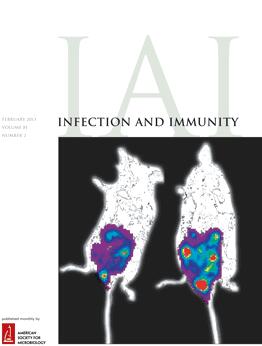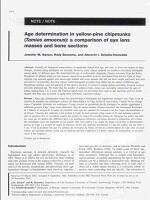Biology
Related Works
Content type
Digital Document
Abstract
Surveillance and defense of the enormous mucosal interface with the nonsterile world are critical to protecting the host from a wide range of pathogens. Chlamydia trachomatis is an intracellular bacterial pathogen that replicates almost exclusively in the epithelium of the reproductive tract. The fallopian tubes and vagina are poorly suited to surveillance and defense, with limited immune infrastructure positioned near the epithelium. However, a dynamic process during clearing primary infections leaves behind new lymphoid clusters immediately beneath the epithelium. These memory lymphocyte clusters (MLCs) harboring tissue-resident memory (Trm) T cells are presumed to play an important role in protection from subsequent infections. Histologically, human Chlamydia MLCs have prominent B cell populations. We investigated the status of genital tract B cells during C. muridarum infections and the nature of T cells recovered from immune mice using immune B cells as antigen-presenting cells (APCs). These studies revealed a genital tract plasma B cell population and a novel genital tract CD4 T cell subset producing both gamma interferon (IFN-γ) and interleukin-13 (IL-13). A panel of CD4 T cell clones and microarray analysis showed that the molecular fingerprint of CD4γ13 T cells includes a Trm-like transcriptome. Adoptive transfer of a Chlamydia-specific CD4γ13 T cell clone completely prevented oviduct immunopathology without accelerating bacterial clearance. Existence of a CD4γ13 T cell subset provides a plausible explanation for the observation that human peripheral blood mononuclear cell (PBMC) Chlamydia-specific IFN-γ and IL-13 responses predict resistance to reinfection.
Origin Information
Content type
Digital Document
Abstract
Poster presentation at the <a href="https://cap.ca/congress-conference/past-congress/"target="_blank" >Canadian Association of Physicists</a> conference at SFU, Burnaby (June 3-7, 2019).
The use of open textbooks is increasing dramatically in first year physics courses. This poster presents the results of scholarly research around student perceptions, the use and impact of open textbooks, as well as suggestions for how instructors might change what they do in their classroom around their use of open textbooks. Comparing and contrasting student’s attitudes in first year physics, astronomy and biology classes to open textbooks is the theme of this poster. It also relates attitudes towards open educational resources (OER) to simple demographic information and the overall cost of textbooks to determine whether there are indicators that can be measured a priori to suggest that students in a particular course may be more or less receptive to the incorporation of OER. More than 300 students were surveyed in 10 courses over two years at Douglas College so there is enough data to form interesting correlations. The questions that were asked included demographic questions as well as questions such as “How often does your instructor encourage you to read your textbook?” and “What is your best estimate of the percentage of exam questions that could be correctly answered using only the textbook?” Results: Student perceive that the open textbook is as good as or better than commercial books. Satisfaction increases as the book is modified to match learning outcomes.
Origin Information
Content type
Digital Document
Abstract
Conference presentation delivered at the 15th <a href="http://www.aegeanconferences.org/src/App/conferences">Aegean Innate Immunity Conference (Chania, Crete, Greece, 2018)</a>.
<p>Phagocytosis is a fundamental cellular activity preserved in a broad spectrum of eukaryotic organisms, from simple unicellular protists where it is used for the ingestion of food particles, to complex multicellular organisms where phagocytosis is an essential component of innate immunity against invading microorganisms. In this study, we report on the effect of glucose on phagocytosis in the model protist Tetrahymena pyriformis. Initial experiments examined the effects of temperature and contact time with the phagocytic target India ink, on phagocytosis by Tetrahymena. Phagocytosis was assessed by counting the number of phagocytic vacuoles in cells fixed with glutaraldehyde and visualized by light microscopy. Phagocytosis was maximal at room temperature and after 30 min of incubation with India ink. Glucose suppressed phagocytosis in a concentration-dependent manner. In addition, we demonstrated that exposure of cells to other hypertonic solutions, including sucrose, fructose, galactose and mannitol, used at 25mM concentrations, respectively, suppressed phagocytosis. Furthermore, we showed that hypotonic conditions, including incubation of cells in distilled water or diluted proteose peptone culture medium, had little effect on phagocytosis of India ink by Tetrahymena. Our studies may be relevant in elucidating the role of glucose and/or hypertonicity in contributing to impaired phagocytosis, and possibly enhanced risk of infections, in patients with untreated or poorly controlled diabetes mellitus, a condition associated with hyperglycemia.</p>
Origin Information
Content type
Digital Document
Abstract
Virtually all biological characteristics of organisms change with age, and thus, to assess the impact of these changes, accurate aging techniques are essential. However, many current methods are unable to accurately distinguish among adults of different ages. We determined the age of yellow-pine chipmunks (Tamias amoenus) from the Rocky Mountains of Alberta using eye lens masses, annuli from mandible sections, and annuli from femurs. Each of these methods was assessed against nine known-age animals and seven animals that had not been caught previously and were presumed to be juveniles. Eye lens masses could distinguish juveniles from adults but not adults of different ages. Mandibular sections were not practical in this species because of excessive tearing during sectioning. Femoral sections precisely predicted age. We found that the number of adhesion lines, minus one, accurately represented the ages of adults ranging from 1 to 5 years old. Femoral annuli have not previously been used to age mammals and our results suggest that they may be useful in aging other mammals, especially rodents.
Origin Information




